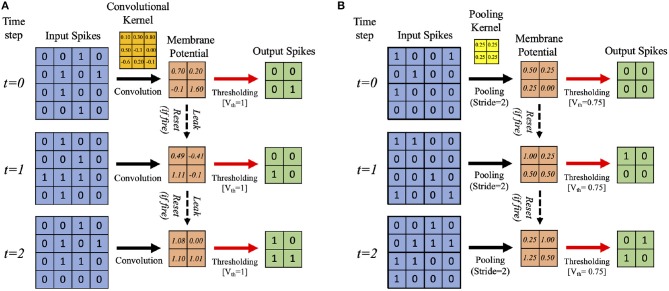Figure 2.
Illustration of the simplified operational example of (A) convolutional, (B) spatial-pooling layers (assuming 2-D input and 2-D weight kernel) over three time steps. At each time step, the input spikes are convolved with the weight kernel to generate the current influx, which is accumulated in the post-neuron's membrane potential, Vmem. Whenever the membrane potential exceeds the firing threshold (Vth), the post-neuron in the output feature map spikes and Vmem resets. Otherwise, Vmem is considered as residue in the next time step while leaking in the current time step. For spatial-pooling, the kernel weights are fixed, and there is no membrane potential leak.

